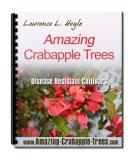Do It Yourself Pond Kits
For numerous homeowners, putting a landscape into the home could effectively compliment or add beauty to the property. Among the biggest additions to the modern residential landscape is the water feature. Water features could vary in size. There could be a small fountain as well as an oak barrel to a huge ‘koi’ pond or may be a waterfall. All these water features make the sceneries and gardens in homes more outstanding and intriguing.
Whether you are an expert or a first-time water feature builder, you could choose from among the many do-it-yourself kits that are available in the market. DIY kits would surely be attractive as you aim to achieve cost effectiveness in creating or putting up your very own water garden.
As mentioned, there are too many options when deciding to buy DIY kits for creating water gardens or water features. Deciding on a good DIY kit could be a separate project in itself. You need to be appropriately guided when shopping for such materials. Here are simple, yet effective tips as you find, choose, and buy DIY kits for water garden installation.
1. Evaluate or assess your own creativity as well as level of skills in creating a water feature. It would be a plus if you have already designed and conducted landscaping projects recently. You could use the same brands or lines of DIY kits. If you are a beginner, a very simple DIY kit would be best suited for your requirements.
2. Consider overall scope as well as design of the project. DIY water feature kits are practically sold in almost all sizes. There are miniature-sized (about 4’ x 6’) and extensive-sized (about 16’ x 21’) models. Use pre-formed liner or flexible ones. Check if the kit includes everything from waterfall filter to skimmers. Some kits could include just the most basic of all DIY kit components. In general, the more you know about the kind of water feature you would put up, the easier it would be for you to correctly identify features required in a DIY kit.
3. Very carefully weigh and assess your budget allocations. Many DIY kits are formed based on costs. In general, DIY kits should be less costly compared to buying all the inclusive components and tools individually. This way, cost should not be a deciding factor. It would be best if you would prefer DIY kits that are of good quality, instead of the cheaper ones that would obviously not render much service. Choosing the best only saves possible dollars on potentially cancelled repairs, replacements, and compensation of low-quality or ill-suited parts. Buying DIY kits could also help you further save on labor.
4. Check warranties of DIY kits for water feature building and installation. Yes, such products also do come with product warranties. You should consider the lifespan of your water feature. Choose those high-quality DIY kits that offer a lifetime of warranties for filters and skimmers. Usually, the ideal products provide 20-year warranties on the liners and a three-year warranty on inclusive pumps. Find such kits and consider them great investments. If you are not intending to keep the water feature for a long time, you may not be very particular about warranties.
5. Of course, do a comparison shop. There are many manufacturers that are offering similar DIY kits at different price levels. To make sure the price is right for every kit you are checking out, refer to many suppliers and price control monitors. Verify all the information that is included and stated in the kit. The main idea behind such a step is to enable every individual to monitor and make reasonable purchases.
6. Always keep the DIY kit when not in use. It may not be appropriate or necessary to use it to do other purposes aside from its main usage. Likewise, set aside the manuals and keep the entire kit in a storage where you would not be able to ruin it unintentionally. Clean all equipment and tools before keeping, and keep the kit safe when putting them out of children’s access. Always check for any form of rust, and make sure every item is still in good shape despite aging.
Have A Great Story About This Topic?
Do you have a great story about this? Share it!
Order Your New Landscape Design Today!
Always Design Before You Plant!
Click The Above Link To Get Your Dream Design Started Now!

Privacy Disclaimer About Contact This Site Built: Solo Build It
Copyright © 2003 - 2023 by Web-Landscape-Design-Ideas.com.
All rights reserved.


